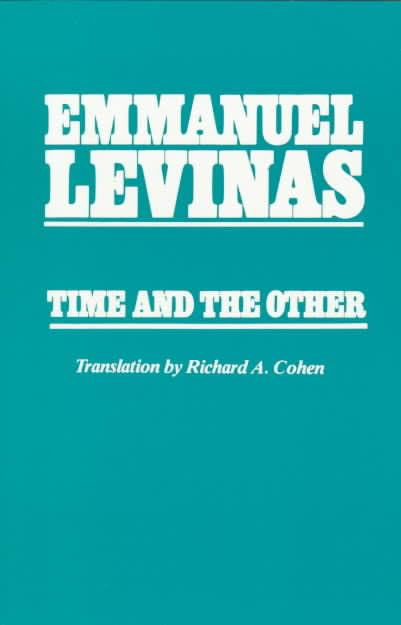Levinas -- "Suffering and Death"
levinas ethics death suffering pain

“Suffering and Death”1 — Levinas
Emmanuel Levinas, “Suffering and Death,” Time & the Other, trans. Richard A. Cohen (Pittsburg, Pennsylvania: Duquesne UP, 1987), p. 68–71.
(Text below is excerpted from “Suffering and Death”)
In pain, sorrow, and suffering, we once again find, in a state of purity, the finality that constitutes the tragedy of {page break; 68} solitude. The ecstasies of enjoyment does not succeed in surmounting this finality. Two points must be emphasized: I am going to pursue the analysis of solitude in the pain of need and work, not in the anxiety of nothingness; and I am going to lay stress on the pain lightly called physical, for in it engagement in existence without any equivocation. While in moral pain one can preserve an attitude of dignity and compunction, and consequently already be free; physical suffering in all its degrees entails the impossibility of detaching oneself from the instant of existence. It is the very irremissibility of being. The content of suffering merges with the impossibility of detaching oneself from suffering. And this is not to define suffering by suffering, but to insist on the sui generis implication that constitutes its essence. In suffering there is an absence of all refuge. It is the fact of being directly exposed to being. It is made up of the impossibility of fleeing or retreating. the whole acuity of suffering lies in this impossibility of retreat. It is the fact of being backed up against life and being. In this sense suffering is the impossibility of nothingness.
But in suffering there is, at the same time as the call to an impossible nothingness, the proximity of death. There is not only the feeling and the knowledge that suffering can end in death. Pain of itself includes it like a paroxysm, as if there were something about to be produced even more rending than suffering, as if despite the entire absence of a dimension of withdrawal the constitutes suffering, it still had some free space for an event, as if it must still get uneasy about something, as if we were on the verge of an event beyond what is revealed to teh end in suffering. The structure of pain, which consists in its every attachment to pain, is prolonged further, but up to an unknown that is impossible to translate into terms of light — that is, that is refractory to the intimacy of the self with the ego to which all our experiences return. The unknown of death, which is not given straight off as nothingness but is correlative to an experience of the impossibility of nothingness, signifies not {page break; 69} that death is a region from which no one has returned and consequently remains unknown as a matter of fact; the unknown of death signifies that the very relationship with death cannot take place in teh light, that the subject is in relationship with what does not come from itself. We could say it is in relationship with mystery.
This way death has of announcing itself in suffering, outside all light, is an experience of the passivity of the subject, which until then had been active and remained active even when it was overwhelmed by its own nature, but reserved its possibility of assuming its factual state. To say “an experience of passivity” is only a way of speaking, for experience always already signifies knowledge, light, and initiative, as well as the return of the object to the subject. Death as mystery contrasts strongly with experience thus understood. In knowledge all passivity is activity through the intermediary of light. The object that I encounter is understood and, on the whole, constructed by me, even though death announces an even dover which the subject is not master, an event in relation to which the subject is no longer a subject.
I at once take note of what this analysis of death in suffering presents that is unusual, in relation to the celebrated Heideggerian analyses of being toward death. Being toward death, in Heidegger’s authentic existence, is a supreme lucidity and hence a supreme virility. It is Dasein’s assumption of the uttermost possibility of existence, which precisely makes possible the very feat of grasping a possibility — that is, it makes possible activity and freedom. Death in Heidegger is an event of freedom, whereas for me the subject seems to reach the limit of the possible in suffering. {page break; 70} It finds itself enchained, overwhelmed, and in some way passive. Death is in this sense the limit of idealism.
I even wonder how the principal trait of our relationship with death could have escaped philosophers’ attention. It is not with the nothingness of death, of which we precisely know nothing, that the analysis must begin, but with the situation where something absolutely unknowable appears. Absolutely unknowable means foreign to all light, rendering every assumption of possibility impossible, but where we ourselves are seized.
-
Also dealt with in “Time and the Will:Patience,” in Totatlity and Infinity, pp. 236–40. ↩︎